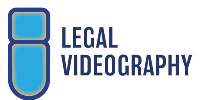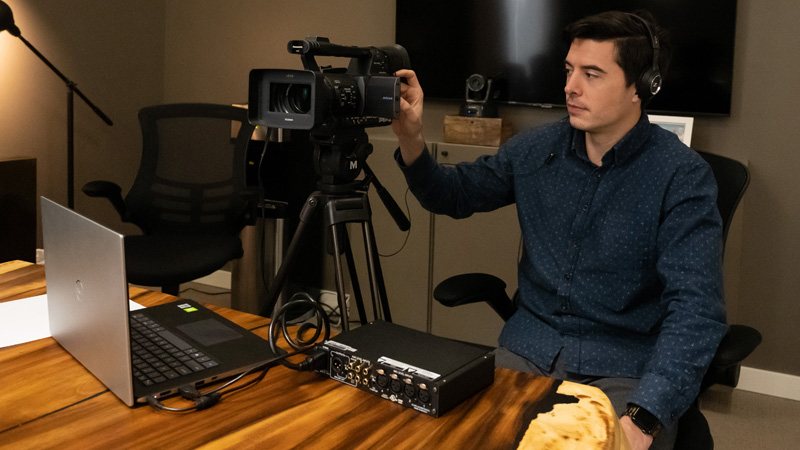Why Legal Videography Is Essential for Modern Litigation Processes
Trick Advantages of Making Use Of Videography in Legal Situations
The assimilation of videography in legal situations provides a range of tactical advantages that can significantly affect test end results. As the lawful landscape continues to evolve, the effects of leveraging videography in trial setups merit better evaluation, particularly in recognizing how these advantages equate right into tangible outcomes in the courtroom.
Boosted Proof Discussion
Improved proof presentation via videography has revolutionized the means legal cases are argued and recognized in the courtroom. By incorporating premium video recordings into lawful proceedings, lawyers can convey complicated details in a much more interesting and understandable fashion - Legal Videography. Videography enables for the visualization of proof, making it simpler for discretionary to realize the context and importance of the here and now facts
Along with boosting clearness, videography can likewise record real-time events, providing a genuine representation of occurrences pertinent to a situation. This immediacy can significantly impact the persuasiveness of a debate, as aesthetic evidence typically resonates a lot more highly than written paperwork. Moreover, video clip proof can consist of vital elements such as body language, tone of voice, and environmental aspects, all of which contribute to an extra all natural understanding of the instance.
Using videography also enables effective organization of evidence, allowing attorneys to present their debates in a coherent and sensible way. By tactically including video clip into their presentations, lawyers can help with a more effective evaluation of the proof, eventually leading to educated decision-making by the court. The transformative power of videography in lawful contexts is both indisputable and vital.
Improved Witness Credibility

Video proof can also reduce potential predispositions that might arise from the witness's appearance or mannerisms in a real-time setting. By offering a well-produced video, legal groups can make certain that the emphasis remains on the content of the testimony as opposed to nonessential factors that may threaten integrity. Moreover, the possibility to review taped declarations can strengthen witness consistency, as discrepancies can be dealt with prior to test, causing even more trustworthy testaments.
Additionally, the durability of videography provides a secure versus memory degeneration or misinterpretation in time. By having a clear, verifiable account of witness declarations, lawful practitioners can develop a more powerful situation, strengthening the overall reputation of the witness and, as a result, the honesty of the judicial procedure.
Involving Jury Experience
Videography can dramatically raise the jury's interaction throughout legal proceedings. By incorporating high-grade video presentations, lawful groups can maintain the attention and record of jurors, changing intricate details right into aesthetically compelling narratives. This engagement is important, as jurors commonly battle to absorb thick lawful terms and complex details offered exclusively through standard ways.
Video clip proof permits jurors to witness events as they unravelled, giving context that created testaments might lack. Using dynamic click visuals can evoke emotional reactions, making the case a lot more remarkable and relatable. For example, security video or reenactments can show key moments, enabling jurors to imagine the evidence in a compelling manner.
Additionally, videography can assist in a much more interactive experience. Jurors can see and hear witnesses, which adds a layer of credibility and immediacy that written records can not reproduce. This multi-sensory strategy cultivates deeper understanding and retention of the here and now product.

Reliable Situation Narration
A compelling story is important for effective instance narration in the visit this page court. Videography offers as a powerful device to craft and offer this story, involving the jury and enhancing their understanding of the case. By visually depicting the occasions bring about the lawful dispute, videography permits attorneys to show intricate situations in a relatable and clear way. This narration method can stimulate psychological feedbacks and foster empathy, creating a much deeper link between the court and the instance.
Including aspects such as witness animations, restorations, and meetings, videography provides a multi-dimensional point of view that standard methods can not achieve - Legal Videography. This graph not only help in clearing up truths yet additionally aids jurors keep vital details. The vibrant nature of video clip can damage down barriers of comprehension, making intricate information much more obtainable.
Eventually, efficient case narration via videography transforms the courtroom experience, enabling attorneys to provide their disagreements in a engaging and persuasive fashion. By using the power of visuals, attorneys can considerably enhance their capability to connect necessary narratives and achieve beneficial results for their clients.
Preservation of Testimonies
Protecting statements is an essential facet of legal proceedings, as the precision and stability of witness statements can considerably impact the outcome of a case. Videography functions as a reliable device hereof, ensuring that testimonies are recorded in their initial context, therefore lessening the danger of misinterpretation or distortion over time.
By capturing verbal and non-verbal hints, videography offers an extensive account of witness declarations, which can be very useful throughout trial procedures. This approach not only records the content of the testament however additionally protects the temperament and psychological feedbacks of witnesses, providing courts a richer understanding of the statement's integrity and significance.
Furthermore, making use of videography helps with a much more dependable review of testaments during pre-trial prep work or post-trial analyses. Lawful experts can revisit recorded declarations to clarify details, assess variances, or develop methods for cross-examination.
In significance, videography enhances the preservation of statements, cultivating a transparent lawful process that can cause even more equitable results. By safeguarding the stability of witness declarations, legal professionals can much better advocate for their customers and promote the concepts of justice.

Final Thought
To conclude, the integration of videography in legal instances considerably boosts the presentation of evidence, strengthens witness trustworthiness, and astounds juries with involving aesthetic material. This medium assists in reliable storytelling, enabling lawyers to communicate narratives that resonate deeply with decision-makers. Furthermore, videography offers as other a long-term document of testaments, reducing the danger of memory degeneration. Jointly, these benefits underscore the important function of videography in modern-day lawful techniques, eventually adding to even more informed judicial results.
The integration of videography in lawful instances offers an array of strategic benefits that can dramatically affect trial end results.Boosted proof discussion via videography has transformed the way legal instances are said and recognized in the courtroom.Videography can significantly raise the jury's engagement throughout lawful procedures. By visually portraying the occasions leading to the lawful disagreement, videography permits lawyers to illustrate complex scenarios in a relatable and clear manner.In conclusion, the assimilation of videography in lawful situations considerably enhances the discussion of evidence, bolsters witness trustworthiness, and captivates courts with engaging aesthetic material.